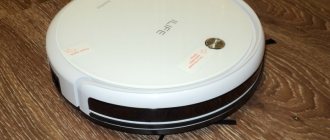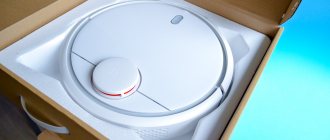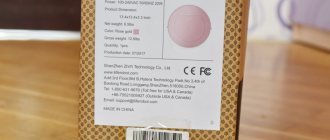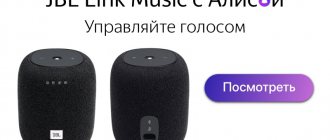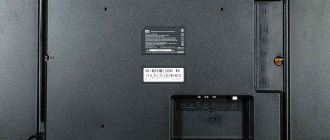Packaging and delivery
ILIFE A8 comes in a thick cardboard box. The design looks moderately colorful: on the front side there is a large image of a robot vacuum cleaner, and on the back side there is a description of the main features.
The delivery set includes all the necessary accessories: charging dock, power supply, IR control panel, a set of spare brushes and shields, a spare HEPA filter for fine air purification, an additional main brush for hard surfaces, a brush for cleaning the vacuum cleaner.
How is the maneuverability of a vacuum cleaner?
It’s difficult for me to understand the algorithms of the proprietary i-Move technology: sometimes the vacuum cleaner cleans the room quickly, sometimes it takes quite a long time, sometimes it seemed to me that everything depends on the degree of dirt (and it clearly takes it into account), sometimes it doesn’t. But it clearly works differently than the A8 with its camera. But I noted one important point: in my case, ILIFE V8s cleaned under furniture clearly better, not just by going under the kitchen furniture, but also carefully working there. This vacuum is truly capable of reaching every corner - it just takes a little longer than the A8, which I suspect makes a map of the room and follows it. ILIFE V8s, on the other hand, drives as if in a new place every time, and even returns to base after pressing a button, carefully moving along the perimeter walls in a clockwise direction. In general, all these technologies and robot algorithms remain (for obvious reasons - no one wants to make life easier for competitors, although the general basics are clear and accessible to everyone: the vacuum cleaner clearly uses some kind of sensors to determine the distance to objects, but sometimes touches them with the bumper. And sometimes not , slowing down in front of an obstacle and going around it.It looks amazing in places.
Appearance
ILIFE A8, like the company’s other robotic vacuum cleaners, is a disk with a diameter of 31 centimeters. The upper part of the case and the ends are made of glossy black plastic, the main functional elements are framed by semi-gloss silver plastic.
The lower part of the body is made of matte black plastic. The decision is correct, since the material firmly resists scratches from contact with the surface being removed. After all, the cleaning system and wheels for moving the robot are located below.
The PanoView navigation system, with the help of which the robot vacuum cleaner orients itself in space, is a whole complex of sensors. The basis is 12 IR sensors on the front end of the body, which notify about large obstacles along the route. Also located in front is a buffer with a rubber pad and mechanical sensors for detecting smaller obstacles.
An additional group of IR sensors on the lower half of the body monitors the presence of the surface under the robot and protects the device from falls. The main technical innovation of the ILIFE A8 is a 360-degree camera, which is used to build a map of the harvested area and complements the data obtained from traditional sensors. The total number of different sensors on the ILIFE A8 body is 36, which is more than significant.
Advantages and disadvantages
Advantages:
- Stylish design.
- Small size, height 72 mm.
- High-quality housing and components.
- Innovative navigation system PanoView.
- Cleaning according to schedule.
- Powerful battery that lasts for 90 minutes of uninterrupted operation.
- Availability of light indication and i-Voice voice notification.
- Two different turbo brushes.
- Good equipment.
Flaws:
- Small volume of the garbage container, only 300 milliliters.
- No virtual wall included.
- Keeps debris out around the floor charging station.
Functionality and management
ILIFE A8 is a vacuum cleaner for dry cleaning of dust and small debris. There are 4 modes available, the first of which is automatic. To activate it, just press the only button on the body of the vacuum cleaner, or the “Start” button on the remote control. In this mode, ILIFE A8 scans the area around itself and then begins cleaning. Movement is carried out in zig-zags, the vacuum cleaner goes around all unexpected obstacles, trying to collect garbage along the perimeter of the obstacle. After cleaning, the device returns to the docking station. The second maximum power mode works similarly to automatic. Its main feature follows from the name; in this mode, the vacuum cleaner operates noticeably louder, but removes dust more efficiently.
The third mode is aimed at collecting small debris and dust in the corners. The vacuum cleaner tries to go around every obstacle as carefully and accurately as possible. This mode works especially effectively in a sparsely crowded room.
And the last, fourth mode of manual control using buttons on the remote control. The “up” button is responsible for moving forward until an obstacle is detected, and the “right” and “left” buttons for rotating the robot clockwise and counterclockwise, respectively. The mode is initially intended for cleaning local contamination when there is no need to clean the entire room. It also makes it convenient to return the vacuum cleaner to the room with the docking station.
The cleaning time can be programmed using a timer. And since ILIFE A8 navigates space quite well - it does not need to be carefully looked after and constantly rescued from obstacles, the robot can be trusted to clean when there is no one in the room.
There is no screen on the body of the robot vacuum cleaner, only one indicator. Activation of modes is accompanied by voice comments, but only in English. Since their variety is small, the tips are easy to learn and perceive without knowing the language.
What else do you need to know about how a robot vacuum cleaner works?
The most important thing is to remove any small objects from the floor before starting. Especially in the “risk zone” are various wires of other household appliances (for example, a floor lamp cable, for me it is also an iron cable, which often hangs from the ironing board if it has not been removed). Well, it is important to regularly clean not only the brushes (hair and fur - after each cleaning) and the garbage container, but also its filters. And also do not forget to clean the contacts from time to time (both the charging station and the vacuum cleaner itself). A special feature of the ILIFE A8 is its glossy body, which itself collects a lot of dust - it also needs to be cleaned (maybe you should have a vacuum cleaner in stock to clean the body of this vacuum cleaner?) But in general, a robo-vacuum cleaner in the house brings a lot less hassle and a lot more benefits than I do expected. So purchasing such a device will be useful for every family.
How do pets perceive a robot vacuum cleaner?
I was really looking forward to how many comical videos I would make with my cats when they started riding around on a vacuum cleaner. How quickly they will become YouTube stars and how many views they will get. My rosy dreams were not destined to come true. The cats reacted to the new device with reserved caution, preferring to stay away from it and watch its work from above, from the height of the back of the sofa. There was no talk at all about getting close to a working vacuum cleaner, much less climbing on top of it. In addition, I strongly suspected that a large Maine Coon simply would not be able to handle a vacuum cleaner, and our second cat was initially too timid for such experiments.
The question of price and neighbors in the line
Sales of ILIFE A8 have just begun and the price for it in the company store is now 300 dollars or about 8,200 hryvnia. It’s difficult for me to assess how much it’s worth the money if, for example, any of the Philips robot vacuum cleaners we sell are cheaper. On the other hand, I also can’t call the ILIFE A8 a trinket; it does its job properly, although you should still understand that no robotic vacuum cleaner will save you (at least for now and in the foreseeable near future) from the need to do thorough cleaning. This is just a tool for keeping the house clean, although the tool is damn smart and effective. Its main advantage is its three brushes, including the main one with long bristles that can effectively collect hair. For comparison, the older ILIFE model with the possibility of wet cleaning - the V7s Pro robot vacuum cleaner, known to gg from reviews, costs one and a half times cheaper - 200 dollars or a little more than 5 thousand hryvnia. And the previous flagship model ILIFE A6 with three brushes and effective cleaning on any surface now costs $250 or 6,100 hryvnia. And it differs from LIFE A8 (as far as I can tell without looking) in the absence of a camera (less effective navigation system) and a voice assistant that first appeared in ILIFE A8.
Autonomy
ILIFE A8 is equipped with a lithium-ion battery with a capacity of 2600 mAh at a voltage of 14.4 V. The battery provides up to 90 minutes in cleaning mode. Taking into account the function of automatic return to the docking station for recharging, the battery life is sufficient.
The docking station is a small platform with a power indicator and two contacts for charging the vacuum cleaner. Detection is carried out using IR sensors that create a special grid. Thus, within the same room there are no problems with finding a docking station. However, if the robot goes into the next room, there is a high probability that it will have to be returned manually.
Functionality
We suggest considering the main operating modes of iLife A8:
- Automatic – default mode. When the robot vacuum cleaner is started, the process of cleaning the room begins along a zigzag path, while the device itself determines the cleaning pattern independently, based on the information received about the surrounding space from the camera and sensors. The device is able to remember places where it has already been cleaned, thereby not wasting battery power or wasting extra time.
- Point-by-point cleaning (local/local mode) – designed for thorough cleaning of a specific, most contaminated area of the room. You must install the robot vacuum cleaner in the center of this zone yourself, after which it will move along a spiral path, increasing its radius over time. At the end of the work, the device will return to its original point.
- Perimeter cleaning - iLife A8 will move along walls and objects, avoiding obstacles and collecting debris and dust from baseboards, furniture legs and corners.
- Maximum mode (MAX) - in this mode, the vacuum cleaner increases suction power, which allows it to more effectively and quickly clean complex surfaces such as carpets and rugs. However, this significantly increases battery power consumption and noise levels.
Operating modes
It is possible to control the operation of the robot vacuum cleaner in manual mode: using the remote control, you can independently direct the device to the desired location. In addition, the robot can clean on a schedule. To do this, you need to set a timer, and after a specified time it will start working on its own, even in your absence.
Thanks to the voice notification function, iLife A8 will be able to inform you about its current status. At the same time, like most other robotic vacuum cleaners, the Ilife A8 has a “self-charging” mode, thanks to which, when the battery charge level is low, the device finishes cleaning the floor and heads to the charging base for recharging.
Automatic charging on base
In the video you can watch the iLife A8 performance test. We note that the real noise level of the device is in the range of 54-56 dB.
Real operating experience
The operating principle of ILIFE A8 is quite simple. Two side brushes sweep away all excess to the opening of the dust collector. Then the debris falls onto the rotating brush and is sucked into the dust collector. Moreover, the delivery set includes two brushes at once: a rubber one for lint-free flooring and a bristle one for low-pile carpets.
Testing has shown that the robot detects large obstacles with a bang and stops within a couple of centimeters. With obstacles outside the field of view of the IR sensors on the front panel, the robot allows a collision, after which it stops because the mechanical sensors are triggered. Fortunately, the spring-loaded bumper is equipped with a rubber damper. There are no problems with movement; the robot easily climbs onto carpets and overcomes interior thresholds. All thanks to large rubberized wheels with appropriate tread. The only thing a vacuum cleaner is afraid of is wires and other ropes that can get wrapped around rotating structural elements. If it gets stuck, the robot will stop and notify you of the problem with a sound signal.
If we judge the quality of cleaning, then a robot vacuum cleaner is far from a substitute for the usual cleaning of floors. At the same time, the gadget collects most of the dust and small debris. By the end of the week, the apartment looks more than decent; there is definitely no feeling of a dusty desert with lumps of dirt instead of tumbleweeds. As a result, order in the rooms without difficulty and waste of time.
Review of the iLife A8 robot vacuum cleaner with navigation and two types of brushes to choose from
Data sheet technical specifications, delivery set
| Kinematic system | two driving wheels, support swivel roller, auxiliary fixed roller |
| Dust collection method | inertial movement and vacuum filtration |
| Dust collector | one compartment, capacity 0.3 l |
| Main brush | one with lint or a scraper roller |
| Side brushes | two |
| Additionally | rubber scraper |
| Cleaning modes | automatic for the entire available area, local, along obstacles, manual, scheduled cleaning |
| Noise level | no data |
| Obstacle sensors | mechanical front/side bumper, IR proximity and height difference sensors |
| Orientation sensors | IR base search sensors, top video camera, support roller rotation sensor, gyroscope (?), accelerometer (?) |
| Controls on the body | mechanical button |
| Remote control | IR remote control |
| Alert | LED indicator, voice alert and beeps, LCD display on remote control |
| Battery life | up to 90 minutes |
| Charging time | <5 hours |
| Charging method | on a charging base with automatic return or directly from the power supply |
| Power supply | Li-ion battery, 14.4 V, 2500 mAh, 36.0 Wh |
| Power | no data |
| Weight | 2.75 kg |
| Dimensions (diameter×height) | ∅310×72 mm |
| Contents of delivery |
|
| Link to manufacturer's website | iLife |
Appearance and function
The iLife A8 robot vacuum cleaner is packaged in two boxes - an outer protective one made of thick corrugated cardboard, and an inner one made of thinner cardboard and already with a handle.
If necessary, the handle from the outer box can be pulled out by slightly trimming the outer box.
The delivery set includes all accessories necessary for the robot to operate, including batteries for the remote control.
Spare parts and consumables included in the delivery set include a replaceable pleated filter of the last stage, a scraper roller (a bristle brush is installed), two spare rubber scrapers and a set (right and left) of side brushes. There is also a combined brush-comb that can be used to clean the dust collector, the robot itself, and the main brush in particular.
Brief and complete manuals in English. The quality of text and printing is good.
The robot body is made mainly of plastic. The upper half of the body and bumper have a black, mirror-smooth, relatively damage-resistant coating, while the lower half has a more practical uncoated matte surface. The predominantly dark color of the body makes it difficult to find the robot in the dark corners of the apartment when for some reason it does not return to base; it is also more difficult to notice the robot with peripheral vision when it gets underfoot, which means it is more likely to be stepped on. The top panel is covered with a plate of tempered mineral glass, so it is scratch-resistant and easy to clean, but fingerprints are also very noticeable on it. The plastic rim on top around the perimeter, the control panel insert and the dust bin holder have a silver coating. On the top panel towards the front there is a single mechanical button with the word Auto and the power icon illuminated.
Depending on the current status, this indicator glows or flashes green, orange, or red. The brightness of the indicator is low; in a lit room, due to reflections on the silver surface of the button, it is difficult to see what exactly the indicator shows. Additionally, the robot informs about its condition using short and not very loud sound signals and poorly legible messages in English. You cannot turn off the sound notification. In front of the button there is an upward-facing camera peephole, covered with protective mineral glass.
As indicated. The vacuum cleaner has an almost perfectly round shape with a diameter of 315 mm (hereinafter in the text the results of our measurements are given). The bottom edges are beveled, which helps the robot overcome obstacles, and some angularity in the transition from the top panel to the side surface and a lip on the bumper at the top reduce the likelihood that the vacuum cleaner will get stuck under obstacles with little clearance.
The mass of the robot is 2.73 kg.
On the bottom there are two contact pads, a front support swivel roller, side brushes, a battery compartment cover, two drive wheels, and a main brush compartment. Closer to the edge, just behind the bumper, there are three IR height difference sensors, thanks to which the robot vacuum cleaner can avoid falling down the steps.
The front roller is made of black elastic plastic alternating with white and hard. This was done for a reason, but so that the robot, using an optical sensor located under the roller, could determine whether it is moving during cleaning or not, that is, stuck; in the latter case, the robot turns off and sends a distress signal.
The axes of the driving wheels are located on the same diameter of the body circumference, this allows the robot to turn on the spot without changing the boundaries of the area it occupies. A positive role is played by the relatively small height of 75 mm and the body, which is smooth around the perimeter. The drive wheels with a diameter of 65 mm are equipped with rubber tires with shallow lugs. The wheels are mounted on spring-loaded joints with a travel of 28 mm, which also improves the robot's ability to overcome obstacles. A spring-loaded bumper with a small stroke goes around the entire front half of the body.
Shifting the bumper triggers mechanical obstacle sensors. The distance from the floor to the bottom point of the bumper is 16 mm, which means that the robot can potentially drive onto a step of this height. To protect furniture from the front, a strip of medium-hard rubber is glued to the lower part of the bumper. Higher up on the bumper behind a tinted plastic window are IR obstacle detection sensors, a base station and, possibly, a command receiver from the remote control.
By pressing the latch at the back, you can detach the dust collector from the robot body.
The body of the dust collector is made of slightly tinted translucent plastic, but this does not bring much benefit, since you can only look at it either by turning the vacuum cleaner upside down or by removing the dust collector. The front part of the dust collector tilts to a large angle, which makes it easy to shake out accumulated debris. However, the trash compartment is relatively narrow and would be awkward to clean with a regular vacuum cleaner with a crevice attachment, and the front partition on the flip-up part is low, so trash easily spills out of the closed dust bin. It is the height of this partition that limits the useful capacity of the dust collector in relation to heavy debris.
When closed, the front cover is held in place by magnetic latches. For complete cleaning, you need to open the top cover of the dust container and first remove the pleated fine filter, then the foam filter and then the pre-mesh filter.
From our point of view, such a multi-stage filtration system is redundant and only reduces the air flow; one mesh filter would be enough. In any case, foam rubber is definitely superfluous. However, during the tests, a lot of light debris was collected on the first filter (and this was from a clean floor), which means that the suction power, even with all the filters, is relatively high. Note that there is no fan in the dust collector itself, so the dust collector and two filters (except for the folded one) can be washed under water, the main thing is to dry everything well afterwards. The side brushes have long bristles of medium hardness, tufts of which emerge from elastic leads. The right and left brushes differ in the rotation of the leads, and so that the user knows which one to install where, the letters L
and
R.
_ The brushes are attached to the drive axis using a self-tapping screw with a Phillips head screwdriver.
The shaft of the main brush is smooth, of relatively large diameter and with longitudinal grooves - this makes it easier to free the shaft simply with your fingers without the help of tools from threads, hair and other things that have been wound up. The bristles on this brush are of medium hardness, and their tufts are wavy, which reduces the sound from the rotation of the brush in contact with the floor. The ends of the brush axis are capped with black plastic bosses. A steel axis emerges from the center of one, which rotates in a ball bearing pressed into the end of the brush axis. A rubber boss is placed on this axle, which, according to the developers, should reduce noise and vibration.
An alternative main brush is a rubber cylinder with scraper blades. Otherwise, its design is similar to the brush described above. The main advantage of such a lint-free brush over a traditional one with bristles is that hair, wool, fibers, etc. do not wrap around this rubber brush so quickly, and everything that is wound up can be easily removed when cleaning.
The brush in the compartment is fixed with a yellow plastic frame. This frame has a rubber scraper that helps the brush pick up debris from the floor and throw it into the dust bin.
Note that the drive gears of the brushes and wheels allow them to be rotated by hand; this is very helpful when you need to pull the robot out, for example, from under a sofa under which it is stuck, or to untangle something wrapped around the wheels or brushes. When cleaning, the front side brushes scoop up debris to the center, then the main brush throws debris into the dust bin, and the air flow helps suck the lightest debris into the dust bin. Elastic gaskets along the entire path from the inlet of the dust collector to the fan eliminate parasitic air suction past the filters and dust collector.
On the right side there is a power connector for direct charging of the battery and a button that disconnects the battery from the robot circuits.
On the wall of the dust collector compartment behind the rubber plug there is a Micro-USB connector, which is used for service purposes; user updating of the firmware is not supported.
This robot has a lithium-ion battery. The battery pack is made up of four cylindrical cells of the popular 18650 size.
The base on which the vacuum cleaner is charged has a large base, onto which four anti-slip rubber feet are glued to the bottom.
The base is powered by an external power adapter, which can also be used to charge the robot, bypassing the base if for some reason it is unavailable. The cable can be laid in channels on the bottom of the base and brought out to the right or left side.
The vacuum cleaner comes with a small IR remote control.
The screen on the front of the remote control shows the current time and the time at which cleaning is scheduled to start automatically.
The iLife A8 robot vacuum cleaner has four cleaning modes:
Auto mode
— the robot cleans the entire area available to it, and having removed it, returns to the base to charge the battery.
If one charge is not enough to clean the entire area, the robot will continue cleaning after charging. How many such cycles there can be and what the maximum size of the cleaned area is unknown. If you launch the robot from a location other than the base, then after cleaning, it returns to the place from which it was launched. The automatic mode is activated by pressing the start button on the remote control or the Auto on the robot itself.
This mode is also used during scheduled cleaning. In manual mode
When cleaning, the direction of movement of the robot is set using the buttons on the remote control. The robot turns in place at a fixed angle (too large to accurately set the direction) when you press the left-right arrows on the remote control and moves forward until it collides with an obstacle when you press the up arrow.
For intensive cleaning
To reach a certain place, you need to move the robot there or direct it to the desired place in manual control mode, and then press the button with the sight icon on the remote control. The robot will clean a square with a side of approximately 105 cm.
Another cleaning option is to move only along walls and obstacles . This mode is activated by a button on the remote control with a square icon with an arrow.
During cleaning in any of the modes, pressing the Max on the remote control increases the power of the robot's suction fan (pressing this button again reduces the power to normal).
It is possible to schedule a daily start of cleaning in automatic mode for a specific time. To do this, you need to set the current time and the start time of cleaning on the remote control, monitoring by sound signals that the timers of the robot and the remote control are synchronized.
Testing
Below are the test results using our methodology, described in detail in a separate article. First, in mode with normal fan power and a bristled brush.
| Launch | Cleaning time, min:sec | % (total) |
| 1 | 8:00 | 79,0 |
| 2 | 7:12 | 89,6 |
| 3 | 7:34 | 92,2 |
The video below was shot from above from one point, the base is located at the bottom center, during processing part of the video sequence was accelerated ten times, the first start for cleaning:
The robot cleans quickly, but the quality is not the highest; not only does a lot of rice remain on the floor in one pass, but the robot does not go everywhere when it first starts. Here is the result after the first cleaning cycle:
After the third run, there is significantly less garbage:
There is little in the corners, little in the little pen, mostly garbage remains near the base:
The robot passes through the accessible territory once in a snake pattern with minimal overlap and in the most efficient way possible. The robot definitely builds and uses a map of the surface to be cleaned, this can be seen in the route of movement - it cleans the surface only once, if possible, and deliberately moves to a place that it has not yet cleaned. Without the map, this behavior would not be possible. At least in a small test room, the robot maintains orientation even in complete darkness, that is, the camera is not the main and only navigation device. The robot readily climbs into a narrow pen (50 mm wider than the width of the robot) and cleans it thoroughly. The robot handles the base very carefully, even too carefully, does not push or move, but also goes around it far, leaving some debris near it. The robot parks confidently, and in our tests it always does so the first time. There is usually a small gap between high vertical walls that reflect IR rays well and the body of the robot, while the robot approaches low, inclined (for example, a baseboard) or walls that are black in IR light until the mechanical sensor in the bumper is triggered.
Now in high fan power mode:
| Launch | Cleaning time, min:sec | % (total) |
| 1 | 7:51 | 81,6 |
| 2 | 7:42 | 89,6 |
| 3 | 7:09 | 91,5 |
Increasing the fan power in the case of our test debris does not improve the quality of cleaning. Apparently, the rice is mostly brushed over rather than sucked in by the air flow. Now install the lint-free brush, normal fan power mode:
| Launch | Cleaning time, min:sec | % (total) |
| 1 | 7:10 | 81,1 |
| 2 | 7:16 | 90,6 |
| 3 | 7:28 | 92,8 |
In this case, a lint-free brush is just as effective as a lint brush.
The video below shows a local cleaning option:
Additionally, full-scale tests were carried out. To do this, an area of several rooms with a total area of approximately 94 m² was fenced off in an office and relatively clean room. In the corridor (23 m²) there is only a closet at the end; in other rooms the furniture is averagely filled, there are no people. The layout of the room is shown below. On it, colored rectangles mark the rooms accessible to the robot. The robot base is installed in the diagram below on the right.
A lint-free brush was installed, and the fan power was normal. On one battery charge, the robot cleaned this area approximately 2.5 times (235 m² in total), spending about 2 hours 30 minutes.
Twice the robot, having finished cleaning, purposefully returned to the base and parked there (but we immediately launched it back to cleaning from there). Once the cleaning had to be interrupted about halfway through, as something got into the optical sensor behind the bumper, the robot had to be shaken, returned to the base and started cleaning. There didn't seem to be any particularly big gaps. It is worth noting that, despite the obstacles in the form of ledge thresholds and the legs of numerous chairs, the robot went where it could squeeze through and did not get stuck anywhere.
There was nothing wrapped around the side brushes or the body of the main brush itself. It got wrapped around the ends, but everything came off easily.
The dust collector became so full that garbage began to fall back out of it.
To restore the charge, the robot needs to spend 4 hours 2 minutes . During charging from the network, up to 15 W are consumed. 0.6 W is consumed after charging is complete and the same amount is consumed by the base without the robot.
The noise level increases slightly when the fan is turned on at maximum power.
| Fan power | Noise level, dBA |
| Normal | 53,4 |
| Maximum | 55,8 |
The robot is relatively quiet. The nature of the noise it makes is not annoying; being in the same room with a working robot is more or less comfortable. For comparison, the noise level under these conditions of a conventional (not the quietest) vacuum cleaner is approximately 76.5 dBA.
conclusions
In automatic mode, iLife A8 cleans, once walking around the area of the room available to it with a snake, and returns to the base to charge the battery. The robot cleans quickly, but not very efficiently; however, successive launches manually or according to a schedule partially correct this drawback. If necessary, the user can manually control the robot’s movement, turn on modes of intensive cleaning of a local area or following along walls. The robot’s features include the ability to install an alternative lint-free brush-scraper, on which hair, wool, threads, etc. are less likely to get tangled, so this cleaner can be recommended if you have woolly pets.
Advantages:
- Orientation system and rational route planning
- Resume cleaning at least once after recharging
- Large maximum cleaning area per battery charge
- Alternative lint-free main brush
- Quiet operation
- Low body
- Scheduled cleaning
- Sustainable base
- Good equipment
Flaws:
- Leaves a lot of trash near the base
- Small useful volume of the dust collector
Caring for the robot
To maintain the efficiency of dust collection and the power of the vacuum cleaner, it needs to be looked after. Fortunately, this doesn't take much time. It is enough to regularly empty the dust container, clean the filters and brush, and wipe the body with a dry cloth. The package includes a special tool that will facilitate the cleaning process of the robot.
Price issue and neighbors in the line.
At the time of publication of this review, the official ILIFE V8s online store can be purchased for $385. The previous model ILIFE V7s Pro now costs $200, and the still relatively new ILIFE A8 costs $300. The V8s robot differs from its predecessor, the V7s Pro model, by an improved mechanism - two brushes that scoop up debris instead of one. And instead of a central brush (the same as that of the ILIFE A8, only it is even larger there) they installed an air suction mechanism - noisy, but, as far as I can judge in comparison with the A8, no less effective in terms of cleanliness of cleaning. Engine noise (and other features) can be assessed in this video:
Specifications
- Dry cleaning only.
- Collect debris in a 300 ml cyclone filter.
- Li-lon battery capacity 2600 mAh, 1.5 hours of operation, charging lasts 5 hours.
- The area available for processing with one battery charge is 90 sq.m.
- Height 7.2 cm.
- Soft bumper.
- Remote control with IR transmitter.
- Central brush.
- Side brushes – 2 pcs.
- 4 operating modes.
- Cleaning timer.
The average cost is 15,000 rubles.
